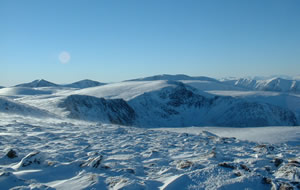
Climate change is widely recognised as the most serious environmental threat facing our planet today. The Intergovernmental Panel on Climate Change (IPCC) recently published its Fourth Assessment Report (AR4) which concludes that warming of the earth’s climate is now indisputable, and that it is very likely that this is due to emissions of greenhouse gases (GHGs) from human activities, particularly from the last half of the 20th century onwards.
Atmospheric concentrations of the greenhouse gases, which include carbon dioxide (CO2), methane (CH4), and nitrous oxide (N2O), are higher than any time over the last 650,000 years. We urgently need, therefore, to find ways of reducing our emissions of these gases.
However, even if the concentrations of these greenhouse gases are stabilised now, global warming and sea level rise are likely to continue for a period of time, so that we also need to find ways to adapt to these changes.
The agriculture and forestry sectors act both as sources of greenhouse gas emissions as well as sinks, contributing about 31% of total greenhouse gas emissions globally, but removing about 16%. Soils represent a significant carbon pool which may be susceptible to future global warming and changes in precipitation patterns, as well as changes in land use. The main gases emitted by the agriculture sector are nitrous oxide and methane , with lesser amounts of from land use change and energy use, with most of the methane emissions due to enteric fermentation from livestock. Forestry makes a net contribution to reducing atmospheric carbon dioxide by carbon uptake in growing biomass, and through forest vegetation and soils.
Rural communities and land use systems, therefore, have the potential to make an important contribution to reducing net greenhouse gas emissions, and at the same time must also find ways of adapting to changes in temperature, precipitation, and increased carbon dioxide levels.
Key paper:
|
Updated: 23 Jan 2024, Content by: RM
|

